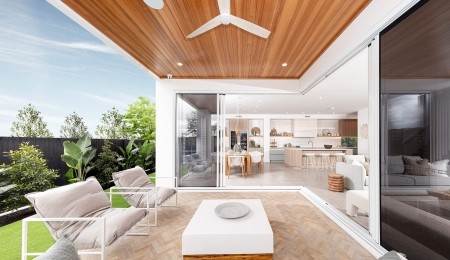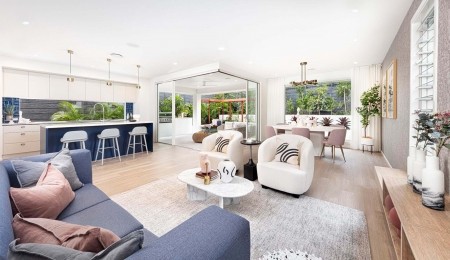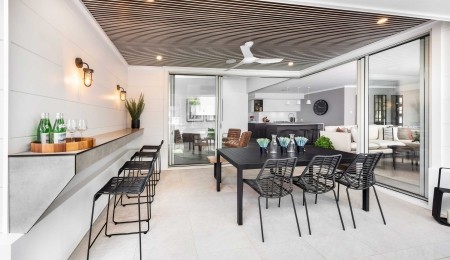Everything You Need to Consider When Designing a Pool
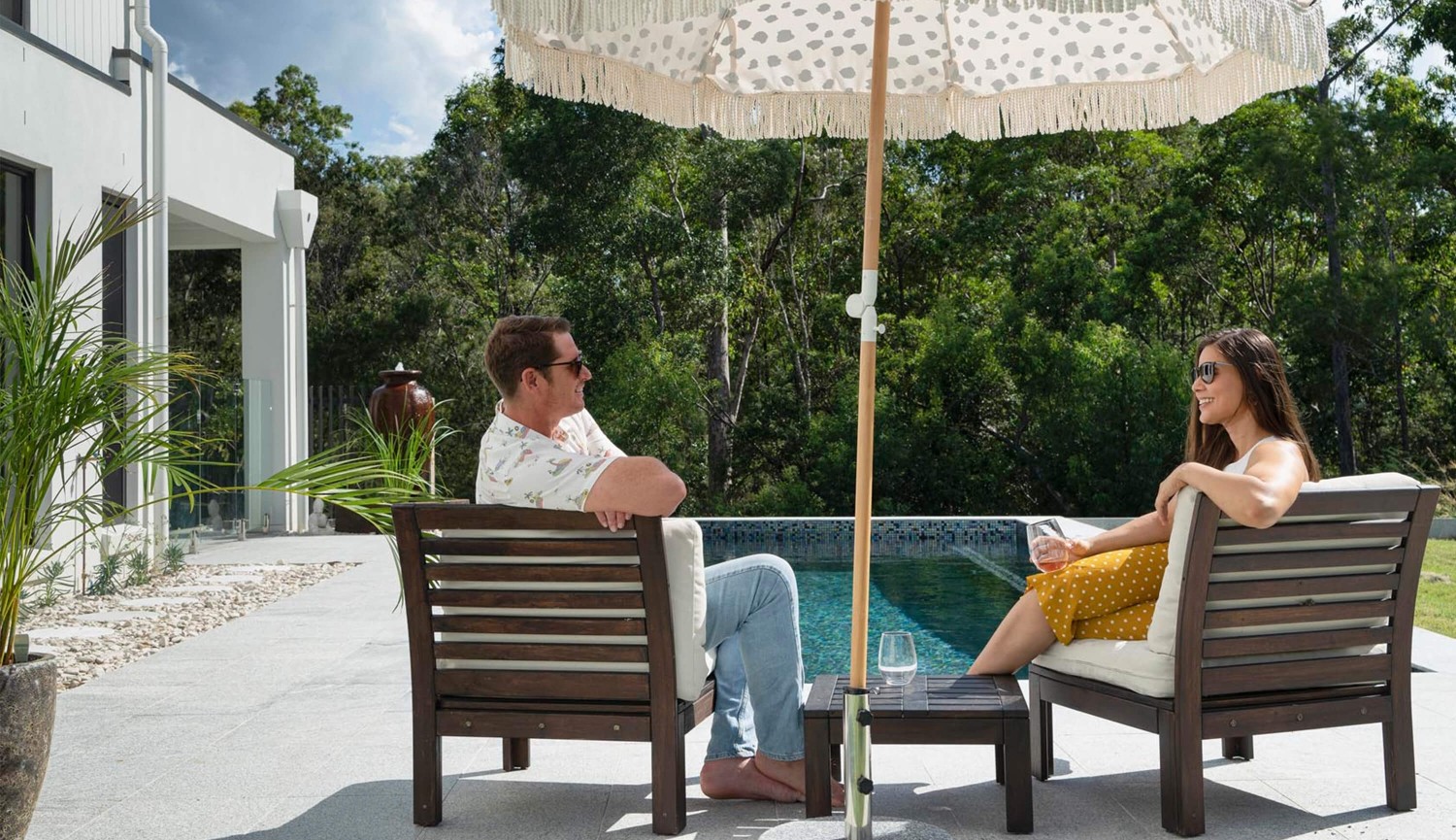
You won't find any better sunshine than in Queensland, so it's little wonder that a house with a pool is the best way to enjoy the outdoors. A house with a pool and a neatly landscaped outdoor area can offer a private sanctuary or a space to entertain friends with a pool party. That's why this article is your guide to designing a backyard swimming pool that is right for you and your family.
It will cover what you need to consider before building, the latest design trends and features, the best materials, average building costs, and finally, where to put it all. Please note that while Brighton Homes do not plan and install backyard pools, we will work with you to ensure your chosen contractor can.
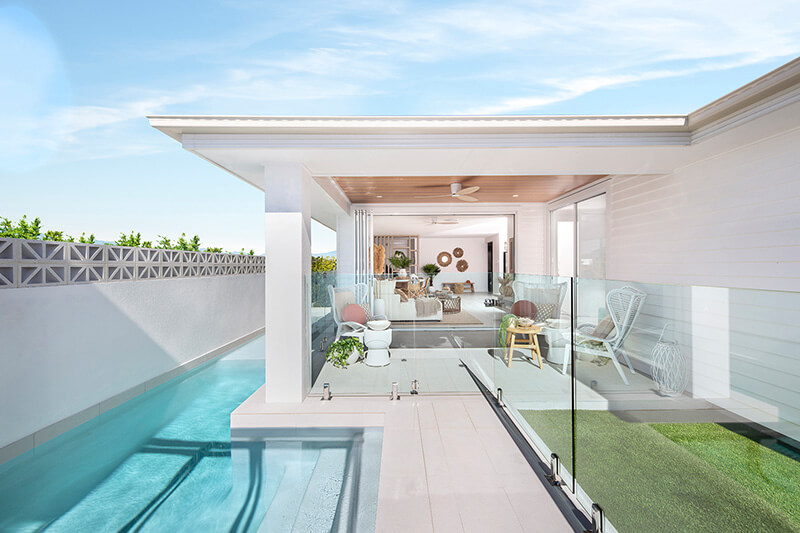
What to Consider Before Installing a Backyard Pool
Like building your house, there are a lot of essential steps to consider before installing a backyard pool. The process itself can take up to 6 months to complete, and to make sure those months are running smoothly, remember these necessary considerations before getting started:
- Is Your Backyard Up to It? - The size and location of your backyard will determine your pool's size, shape and design. Take the time to consider if your backyard is level, sloped or has any requirements around pool positioning.
- In Ground or Above Ground? - When it comes to construction, the first question you answer will always be, should we have an in or above-ground pool? Both are great options, but some have cheaper installation costs (see below).
- Where To Put It? - Once you know what type of pool you want, it's time to decide where to put it. You should consider sight lines, sun and wind exposure, accessibility and storage for the filtration equipment.
- Are There any Council and Building Regulations? - Every Australian state has fencing laws for swimming pools, but each has its own laws and permits to ensure every fence complies with the standard. You must register your pool with your local council and in any pool area and you must prominently display a CPR sign. Learn more about Queensland’s permits and laws around pool fencing, approval and registration.
- Safety Considerations - If you have small children or pets, safety is a significant concern for new pool owners. When designing your pool, consider adding water alarms, perimeter alarms, safety covers, and personal safety accessories like life jackets and pool floats.
- Who Is Going To Build It? - A dependable and experienced contractor can bring swimming pool designs that match your vision to life. So be sure to carefully look around and get referrals for different contractors, paying particular attention to their experience.
Pool Area Design Trends On The Rise in 2023
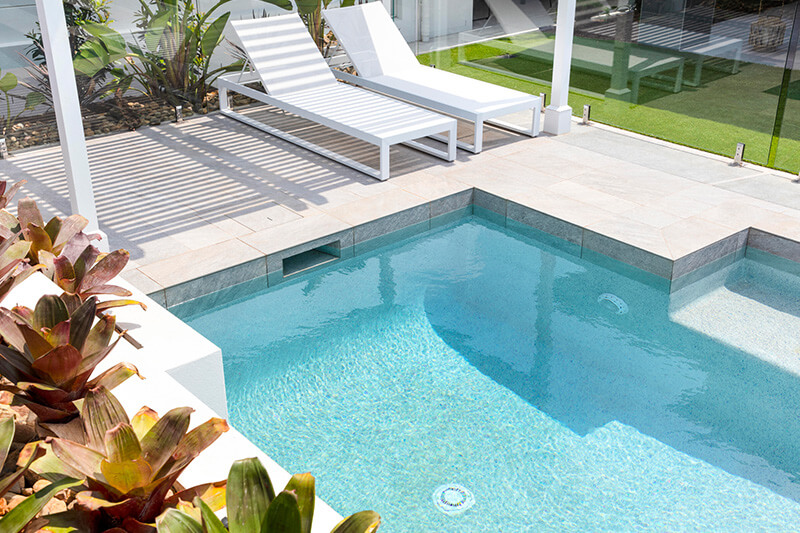
Before settling on a pool area design, let's quickly look at the latest design trends. Having a swimming pool is a significant investment, and we want to ensure that it is up to date so that it transforms your backyard for the better.
- Modern Water Features - If you want to make a statement and turn your pool into a backyard oasis, water features like spill overs and small waterfalls are the way to go. Combine this with neat pool landscaping that guides the water through natural stone and greenery, and you'll have one of the gold pool design standards.
- Interesting Tile Patterns - Playing around with different tile patterns can add a lot of personality on top of the visual flare they can offer your pool design. You can create a unique look using different tile shapes, sizes and colours.
- Ambient Pool Lighting - Transform your pool's aesthetic with attention-grabbing lighting. Nowadays, many pool designers are opting for LED lights, which are brighter, more energy-efficient and offer colour-changing options.
- Smart Pools – With a smart pool, you are able to control the pool’s settings like the lighting and temperature, from your smartphone. The integration of smart technology makes smart pools the very latest in modern pool designs.
- Right to The (Pool) Edge - An infinity pool is where water and the pool's edge meet exactly, making it appear that there is no boundary. These infinity swimming pool designs can incorporate spillovers, allowing for a waterfall effect.
- Plunge Pools – Plunge pools are small pools primarily designed for relaxation. They don’t take up as much space as your average swimming pool, measuring as wide as 2-3 metres and as long as 7 metres.
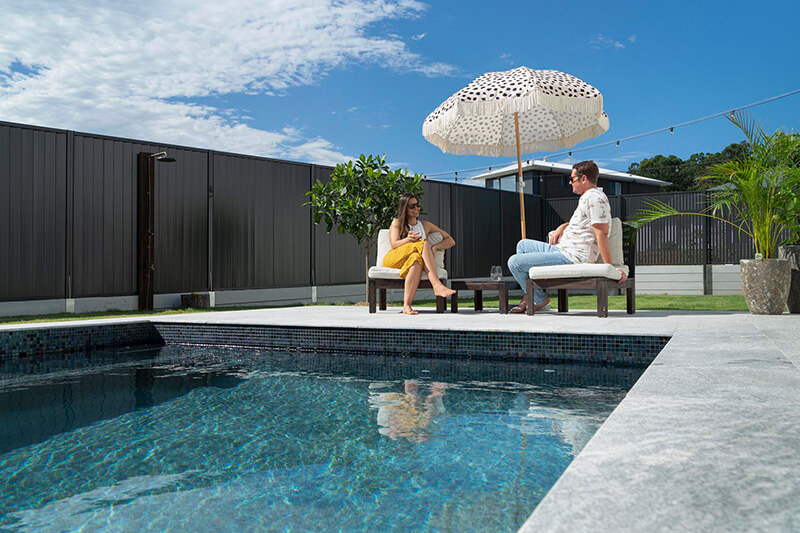
Difference Between Concrete and Fibreglass Pools
Concrete and fibreglass are among the most popular materials for modern pool designs. Both materials are great options, but deciding which is best for your pool will determine which meets your needs the most.
You can make a concrete pool any way you want, meaning they can be easily adapted to fit your backyard. If you want a more customised design, concrete can provide more size, shape and depth flexibility. Concrete can also allow for more swimming pool design options for both the interior and exterior, such as:
- Adding ledges, nooks and swim-outs
- Different surfacing options, such as pebbles or tiles
- Flowing seamlessly with a garden's landscaping
Fibreglass pools are pre-moulded into various shapes and can be positioned in excavated holes or above the ground. They are a much cleaner option thanks to the gel-coating that prevents mould and algae growth. But what they lack in design customisation, they more than makeup for with their finishes, such as:
- A non-abrasive surface that is softer on the feet
- Requires less cleaning and energy consumption
- Fibreglass is also a natural insulator and holds it for longer, meaning a warmer pool.
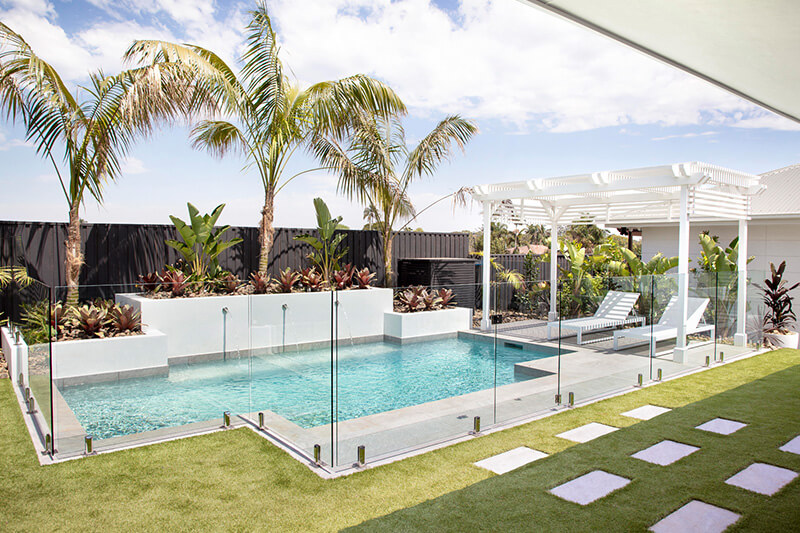
The Costs of Building a New Swimming Pool in Queensland
Before we get into the specific costs of building your new pool, we must touch on what aspects contribute to the overall cost. There is a lot that goes into the construction beyond just installation, and each can add to the price, including:
- The length and width of the pool
- Access to where the pool will be built
- Pool site levels, is it flat or sloped?
- Pool fencing
- Pool tiles and surrounding landscaping
- Electricity and plumbing.
According to Canstar, the building costs for a new backyard swimming pool can range anywhere from $35,000 to $100,000. While writing up your budget, you'll want to break it down into the following categories to get a more accurate final cost, such as:
- Above-ground or in-ground - determines your most considerable cost difference.
- Choice of material - concrete, marble, tile-lined, vinyl lined or fibreglass.
- Size and shape - The larger the project, the more materials and time are needed to complete your swimming pool
- Add-ons - spas, saunas, water features, decorative tiles, heaters, and lighting can all add to the final price.
- Maintenance - can cost homeowners anywhere between $80 to $350 per month.
In-Ground vs Above-Ground Installation Costs
- Above-ground pools - approximately between $3,500 - $7,000+
- In-ground fibreglass pools - approximately between $25,000 - $75,000
- In-ground concrete pools - approximately between $35,000 – $100,000+
Ongoing Maintenance Costs
It can be challenging to narrow down the amount you could spend on maintaining your swimming pool, but the ongoing costs could range between $600 and $2,000 per year. This includes costs for running the filter pump to keep it clean, repair jobs like replacing worn-out lining and cleaning the interior surfaces.
Ongoing Energy Costs
According to Canstar Blue, your swimming pool could cost between $660 and $1,000 annually. The average pool can consume around 2,000 and 3,000-kilowatt hours of electricity, roughly $23 a week. Other electricity costs associated with your collection include:
- Filter Pump - a necessary part of your pool, the filter pump adds 26 to 53 cents to your electricity bill per hour.
- Water Evaporation - when water levels recede due to evaporation, it can account for up to 70% of energy loss and drive up your water bill.
- Heating - although it is a nice upgrade, heating your pool can cost between $4 and $17 per hour. The cost of heating can also be offset by solar power.
- Chlorinators - chlorination kills bacteria and maintains the quality of your pool's water, but in terms of ongoing costs, they only contribute 7 cents an hour to run.
We hope you’ve found this article helpful for building your backyard swimming pool. If you want to create the perfect backyard sanctuary that compliments your modern pool design, check out our Landscaping Tips and Ideas for Your New Home.

